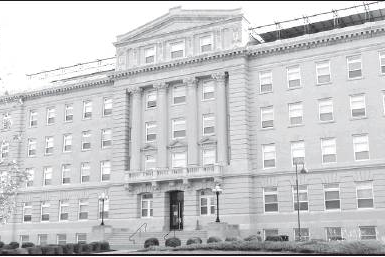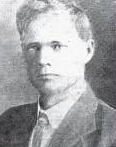
When Lea County rancher Matthew Sewalt transported by train his cattle to Nebraska pastures in 1918, he used rail cars from Seagraves, Texas, to Lubbock and then on to Kansas City, Mo., the city on the borders with Missouri, Kansas, and not far south of pastures in Nebraska.
Sewalt probably was unaware of what had been happening in Kansas City at the time he left on the train, or if he was aware of it perhaps he did not think of what was happening there as such a big deal.
Seagraves, fifty miles or so from his ranch, had become a cattle-shipping center in 1917 after Santa Fe Railway had built an extension to Lubbock, but when Sewalt’s ride ended for him he found himself in another center of activity, a ground zero of an epidemic of influenza. That pandemic killed over 50 million worldwide, and some historians believe it started at the U.S. Army’s Fort Riley, Kansas, west of Kansas City.
Sewalt died of the flu on Nov. 7, 1918 in KC’s Christian Church Hospital. His daughter Marjorie Waits wrote of him that at age 45 he was in the prime of his life, and “he was just beginning to fulfill his potentiality, and one can only conjecture the changes in the community and in my mother’s and my lives had he lived.”


Marjorie was only two years old when her father died, and when she wrote those words in her 50s, you can hear in her words the pain of a woman who had gone most of her life without a father.
Marjorie was absolutely right in thinking that if Matthew had not passed away, he would have had a tremendous impact on Lovington and Lea County. We know that because he already had impacted the community positively in many ways.
He was a prominent rancher and businessman, and here is how Lea historian Gil Hinshaw described him:
“Lovington residents who knew Matthew Sewalt considered him a remarkable man. In many respects, he was a frontier individual ahead of his time — an educator, inventor, rancher, cowboy, investor, and community developer.”
Born in Fluvana, Texas, north of Snyder, he taught school in Malaga, N.M., near Carlsbad, then took employment on a ranch. Working first as a cowboy, he became a ranch manager, then a part owner, before he bought his own ranch off of the caprock west of Lovington.
He married Clara Creighton of Lovington and built the house in town he expected to use as a home which would allow his daughter to go to school in town. He had invested in a new two-story hotel, the Commercial Hotel, in town, and things were looking so good, he must have been a happy man when he arrived in Kansas City to tend his herd of cattle.
Just a couple of weeks ago, on March 15, 2020, the Kansas City Star newspaper published a story that described in gruesome detail what life was like in 1918-1919 in Kansas City when Sewalt came to town and the flu marched the city like a monster on the loose. The headline read, “How KC’s response to the 1918 flu pandemic caused needless deaths.”
The story was written to help guide Americans in our current COVID-19 pandemic, and the story exhibited headlines and news quotes from the Kansas City Star published during the 1918 pandemic. The story described in detail what happened in the city in October and November 1918 during the days in which Sewalt arrived, was hospitalized, and died: “The so-called Spanish influenza had been ravaging the city since late September. Hundreds in town were sick and dying of ‘the purple death.’ Over the next 27 weeks, the flu would kill an estimated 2,300 people in Kansas City, giving it a mortality rate greater than New York, Chicago, Cleveland, Detroit and even St. Louis, a city with more than 2.5 times Kansas City’s population at the time.”
Here is a passage from the story describing the origin of the pandemic:
“The exact source of the Spanish flu is unclear, but some have come to believe that it should have been called the Kansas flu. It’s thought to have taken root in early March 1918 among World War I soldiers at Camp Funston, part of Fort Riley in Geary and Riley counties.”
And here is a passage describing what some of the stricken individuals experienced: “This influenza was violent. …. This influenza killed…. No mere cold, the flu caused a swift and wrenching death, with a killing rate 25 times higher than milder forms. In hours, healthy individuals could go from having what seemed like a cough to developing pneumonia that engorged the lungs with fluid, then blood.
“Violent hacking contorted bodies as victims struggled to breathe. With lungs filled to uselessness, oxygen disappeared and victims quickly turned blue, the ‘purple death.’ First the mahogany patches rose near the cheekbones and ears; then they spread across the face.”
We have no specific descriptions of Sewalt’s final days and hours, but given these accounts of the deaths of all those around him in Kansas City, it is certain that he must have suffered much.
And of course his family suffered in that they were not with him in his final hours. The death of this healthy, middle-age rancher would have been a surprising and shocking experience for his family and for his friends and neighbors in Lovington and Lea County.
World War I was brought home to frontier Lea County when young men from this corner of the state went off in 1918 to fight and die in Europe.
The pandemic flu of 1918-1919 was something else that brought isolated Lea into the mainstream of contemporary life. In addition, Matthew Sewalt‘s death by flu demonstrated that Kansas City was not all that far away up the plains from Lovington.
Jim Harris is the executive director of the Lea County Museum. He can be reached at 575-396-4805.













